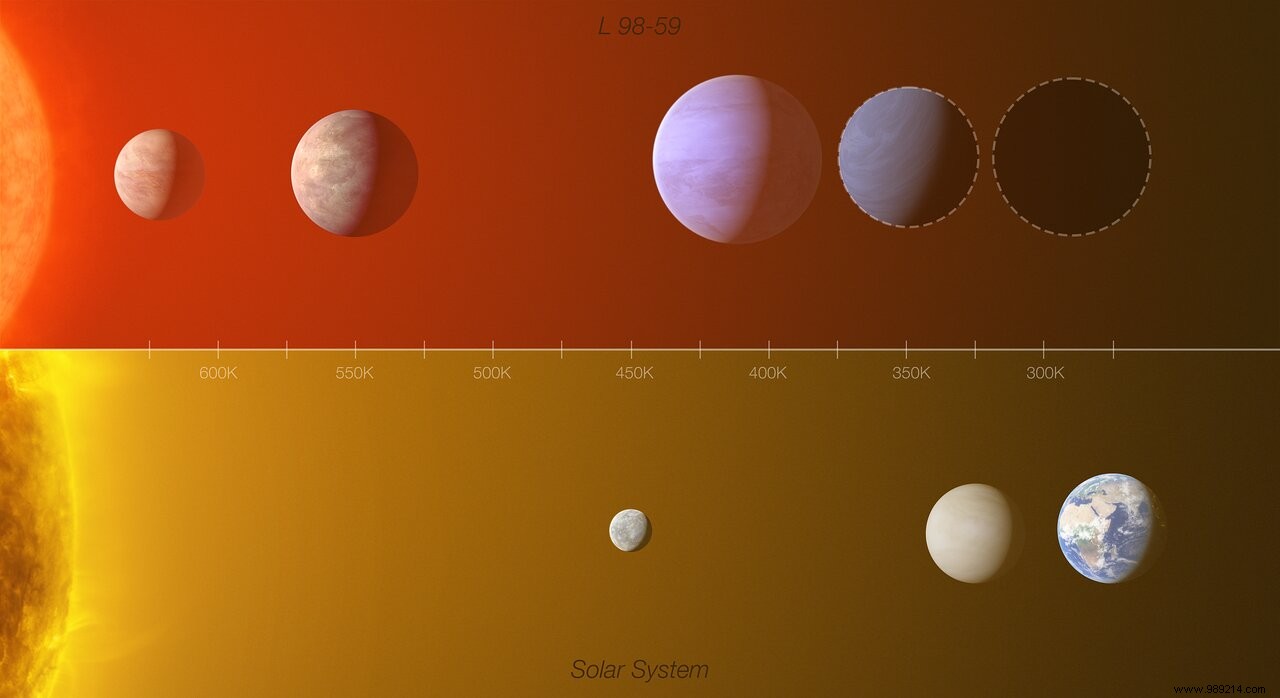When a system hosts one of the smallest rocky planets ever discovered, a planet dominated by oceans, and even the possibility of an Earth-like world evolving the habitable zone of its star, astronomers are taking note. You will find all this beautiful world just 35 light years from Earth.
At the heart of this intriguing system is a red dwarf star dubbed L 98-59, also known as TOI-175. Two years ago, a team of astronomers using NASA's TESS satellite identified three planets orbiting around it, each Earth-sized.
At the time, these three worlds had been identified using the transit method, which consists of identifying tiny drops in stellar luminosity, testifying to the repeated passages of one or more planets passing between the star and the Earth. The disadvantage of this method is that it can only determine the size of the targeted objects. However, if we want to know what a planet is made of, the minimum that researchers need is to know its mass and its radius . From there, they can calculate its overall density and therefore estimate its composition .
As part of a recent study, a separate team therefore sought to characterize these planets using another method:that of the radial velocity.
This technique is essentially based on the movement of the star caused by the presence of the planets. In planetary systems, all bodies, stars and planets, move around a center of mass. This is the gravitational center point of the system.
However, planets, however small, can influence the movement of their star around this center of mass and therefore its luminosity. By carefully examining how the star's light footprint changes over time, scientists can then isolate this wobble and calculate the mass of the planet causing it .
For this work focused on radial velocity measurements of the star TOI-175, published in Astronomy &Astrophysics, astronomers relied on the Very Large Telescope (VLT) , in Chile. This study confirmed the presence of the three stars initially discovered and made it possible to better understand them. Among them is one of the smallest rocky exoplanets ever discovered . Designated L 98-59b, the object has about half the mass of Venus.
According to analyses, this planet and its neighbor seem to hide small iron cores and may each have a little water contained in an atmosphere. The third planet would have a similar core, but seems to contain much more water, up to a third of its mass .
In addition to these three worlds, the researchers also pointed to the presence of a fourth rocky planet and potentially a fifth evolving in the habitable zone of its system , likely to receive about as much light and heat from its star as Earth from the sun.

More precise data will therefore be necessary to confirm the presence of this fifth planet, but if so, it could be the target of the James Webb Telescope. Once deployed in space, probably before the end of the year, the observatory will indeed be able to concentrate on studying its atmosphere by focusing on the search for biosignatures.